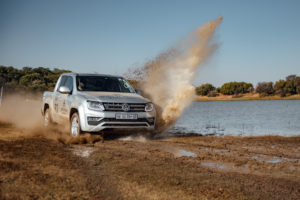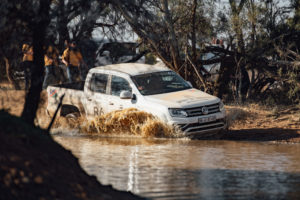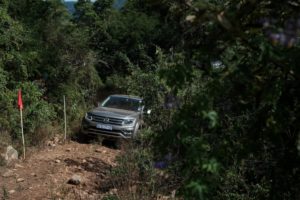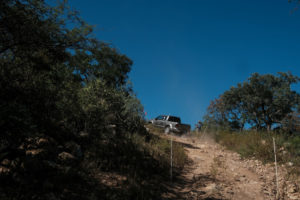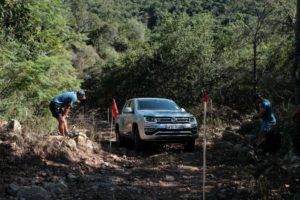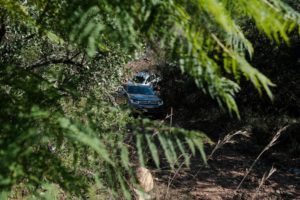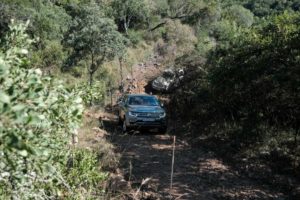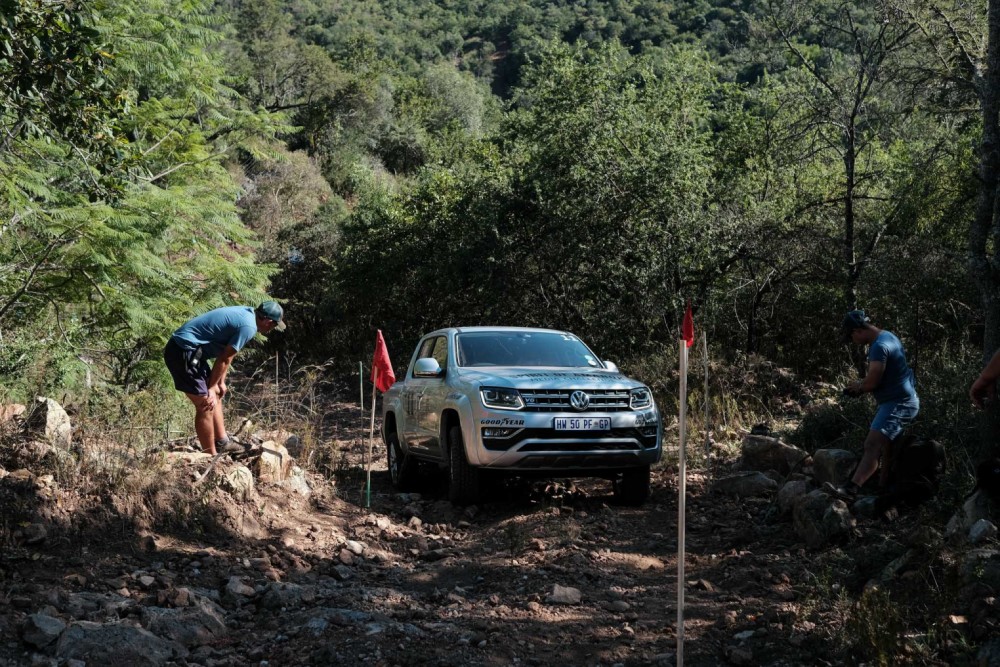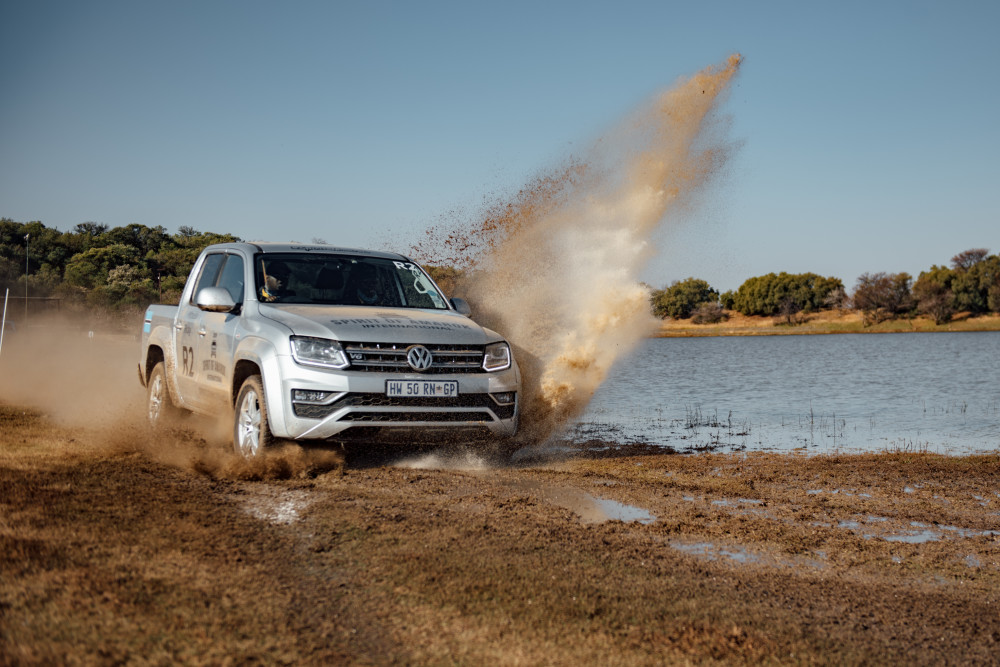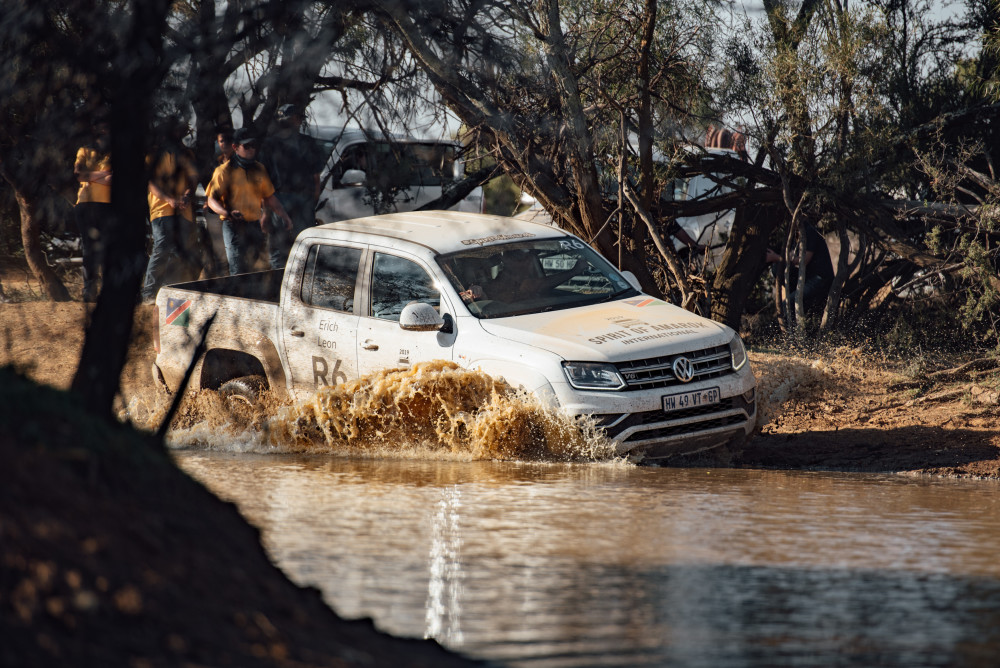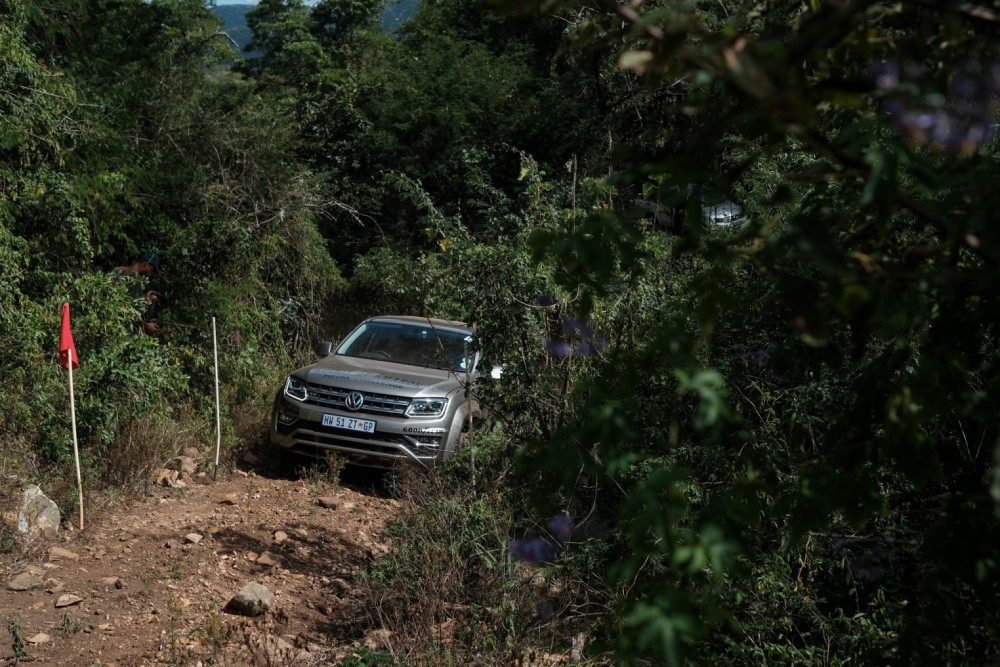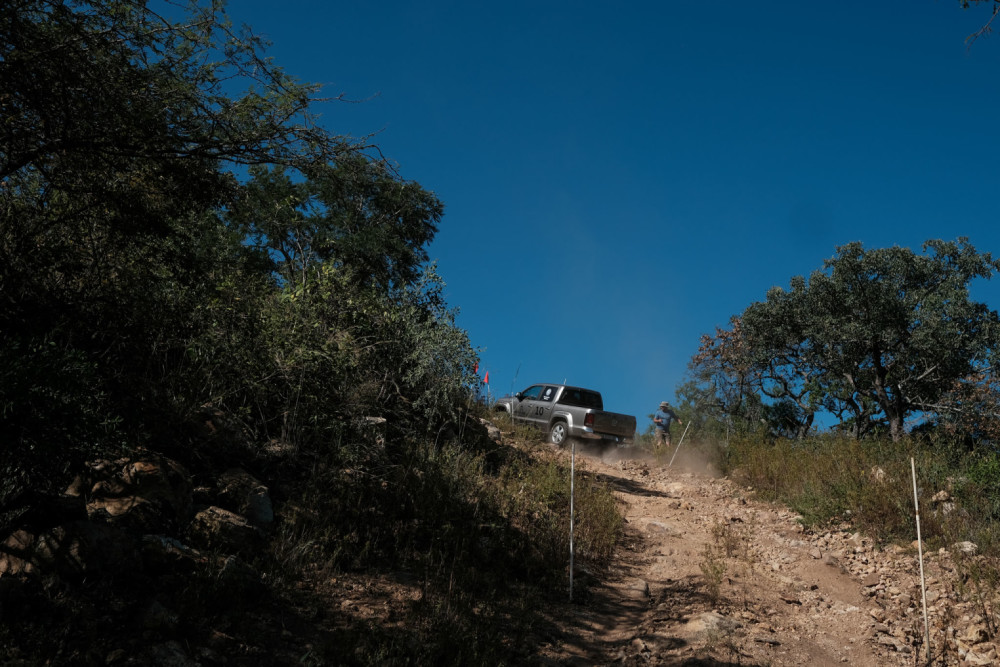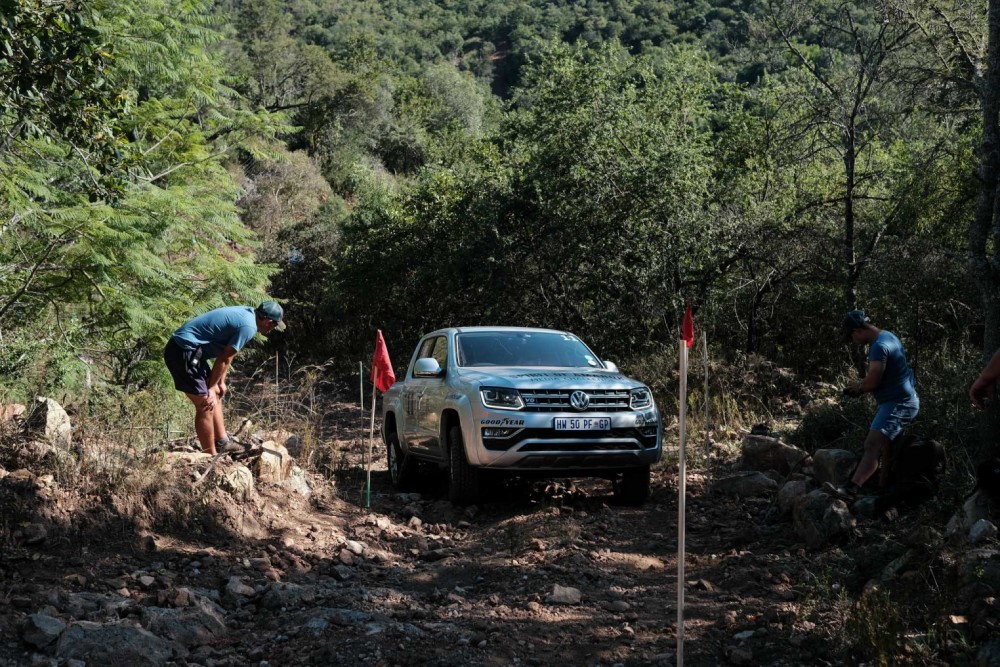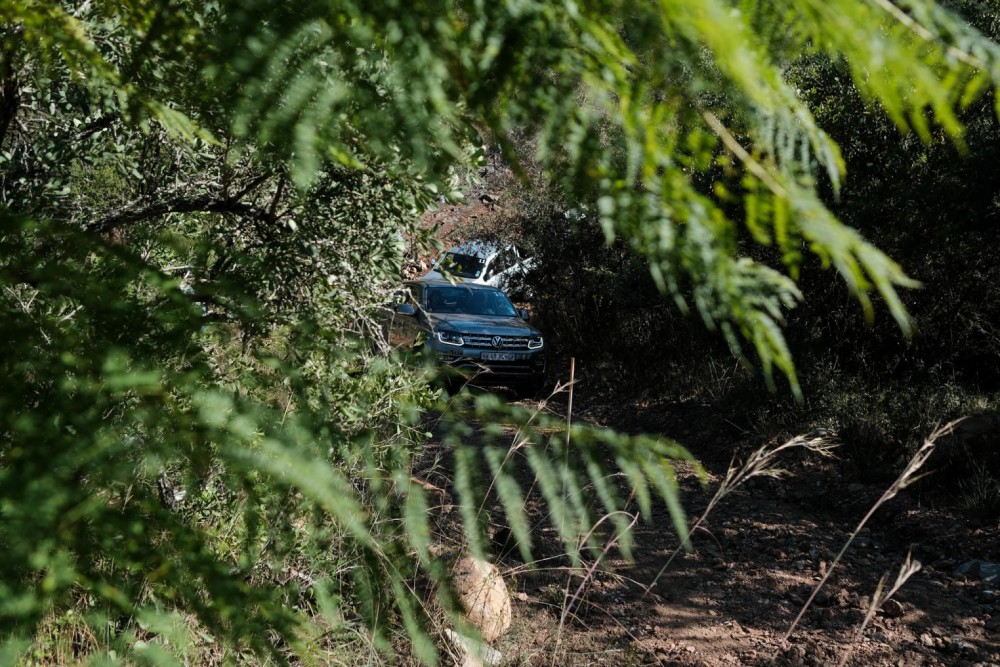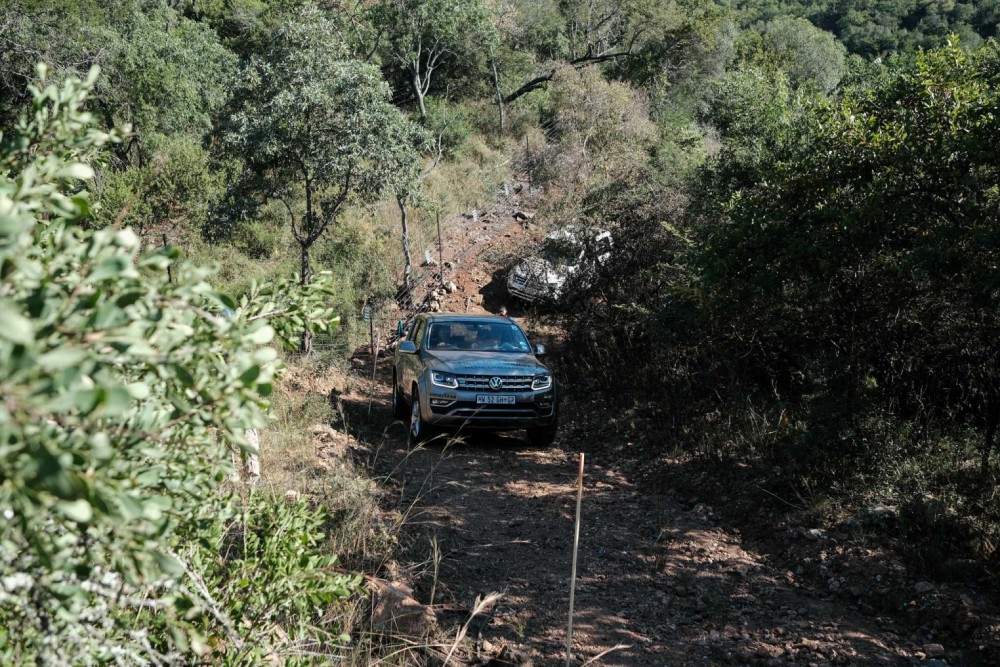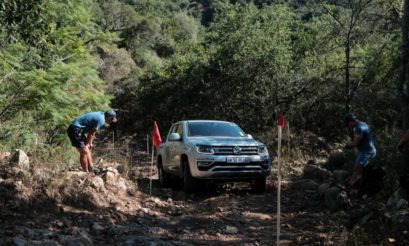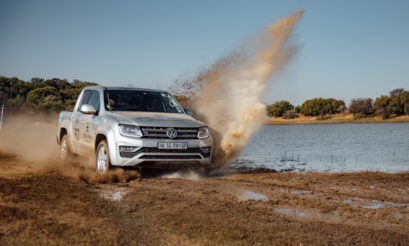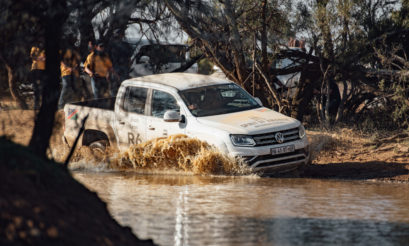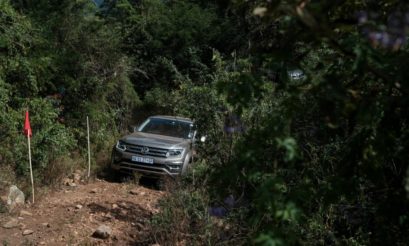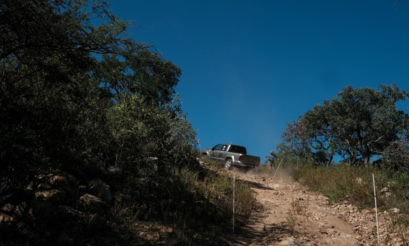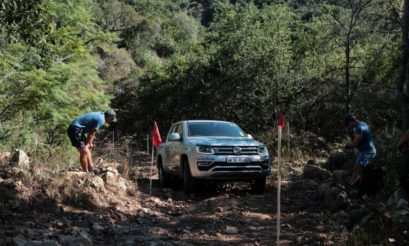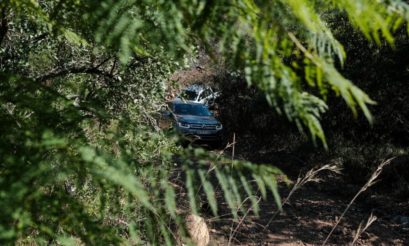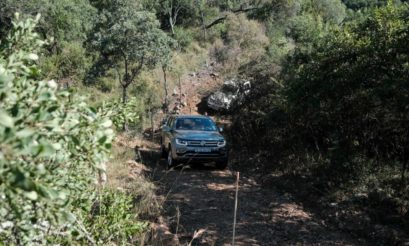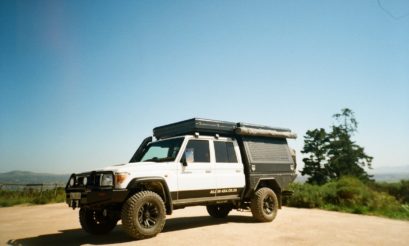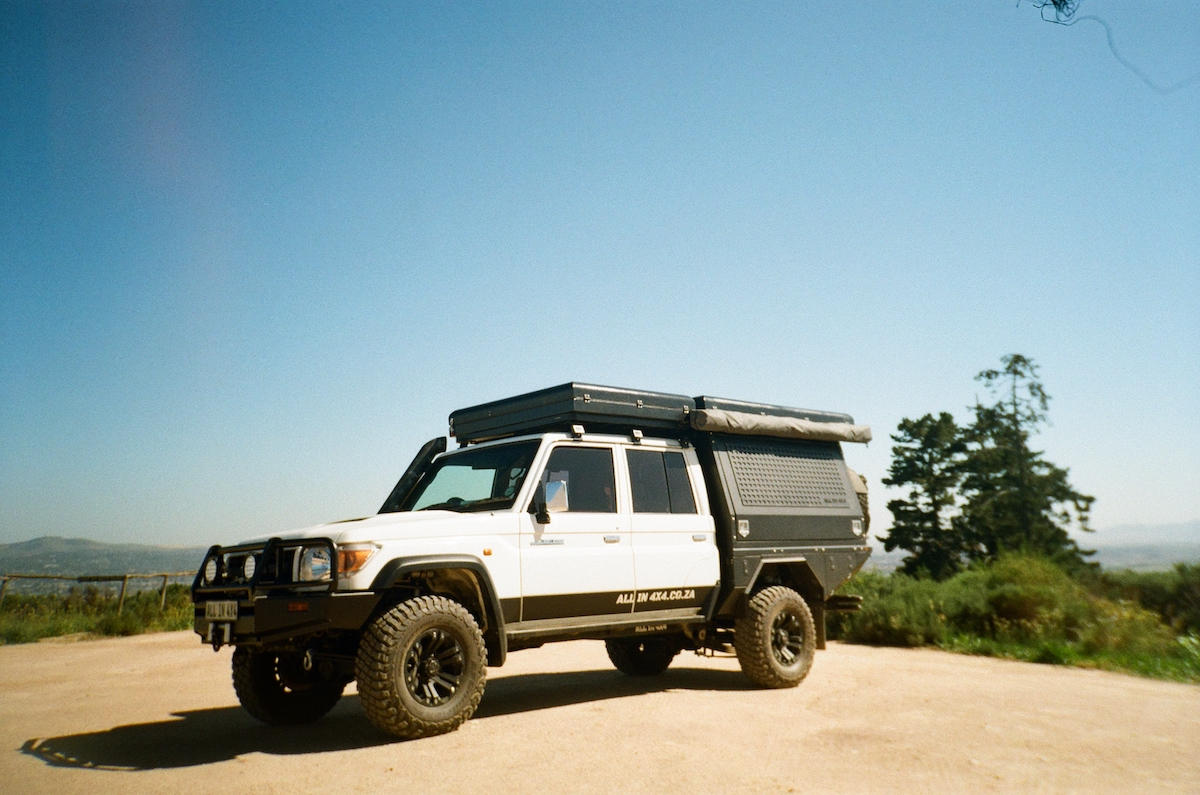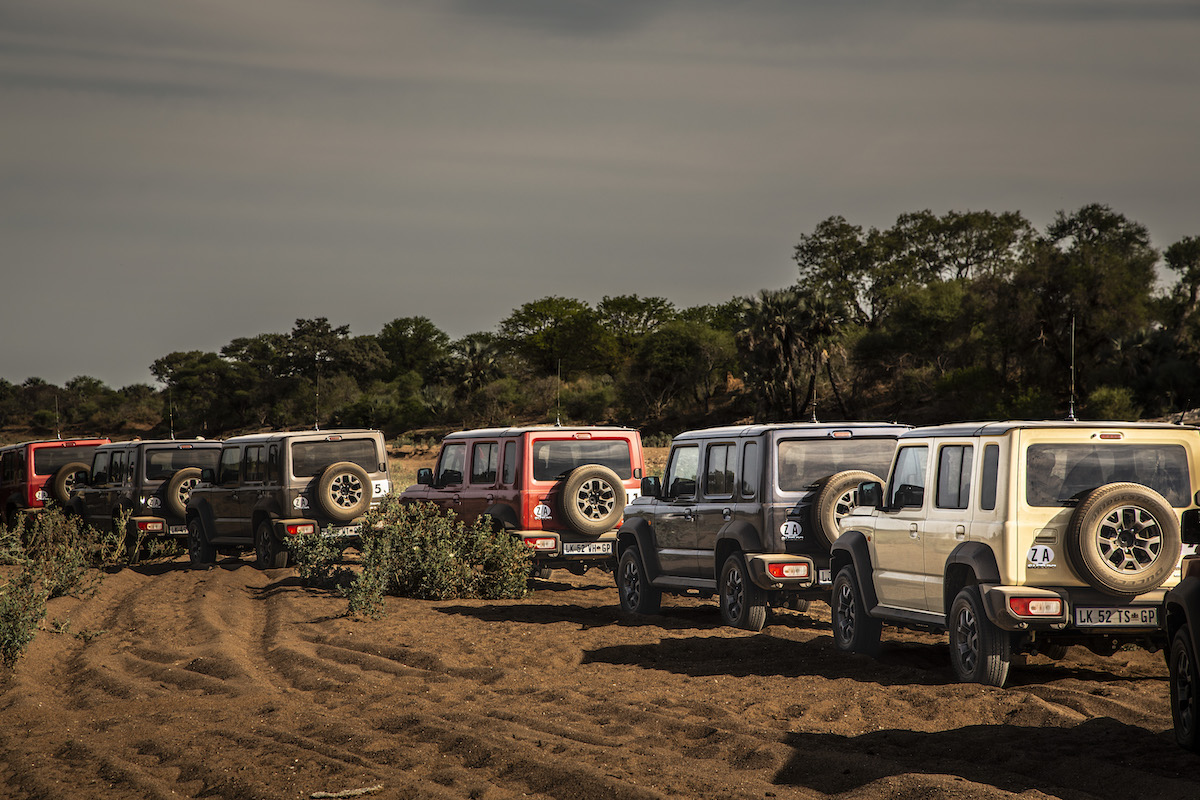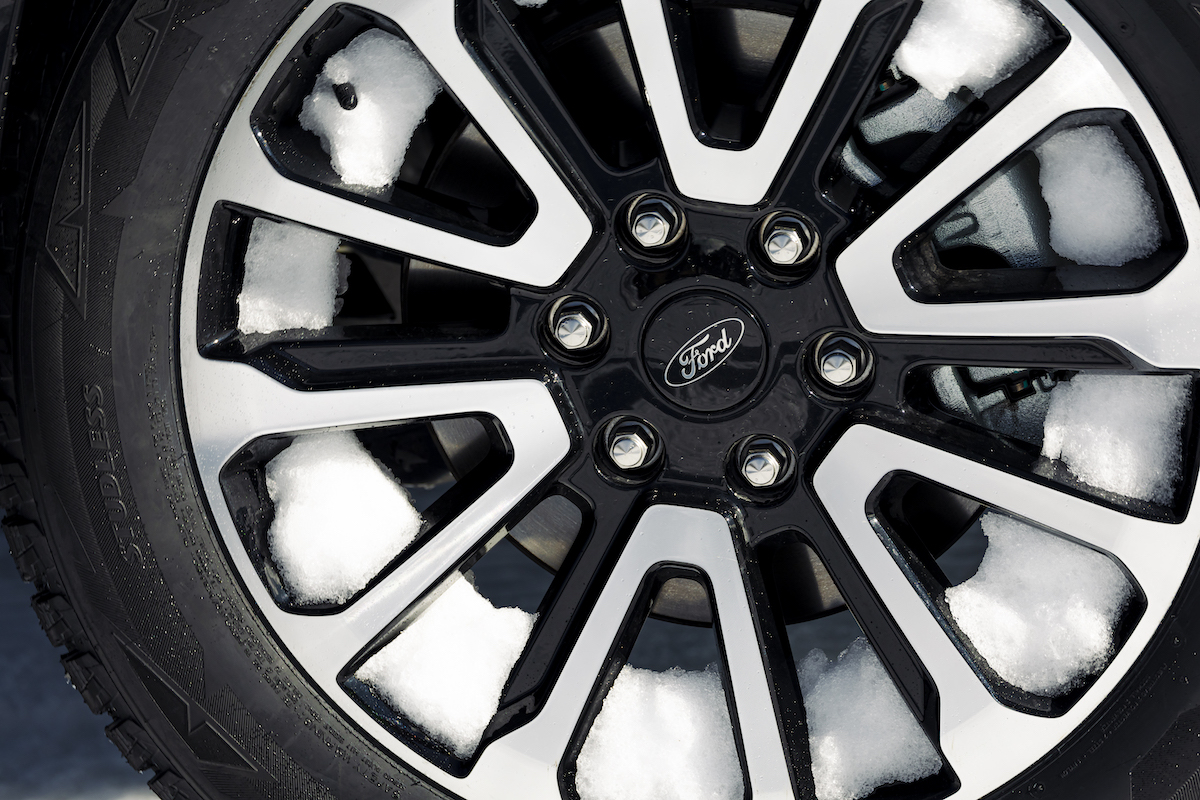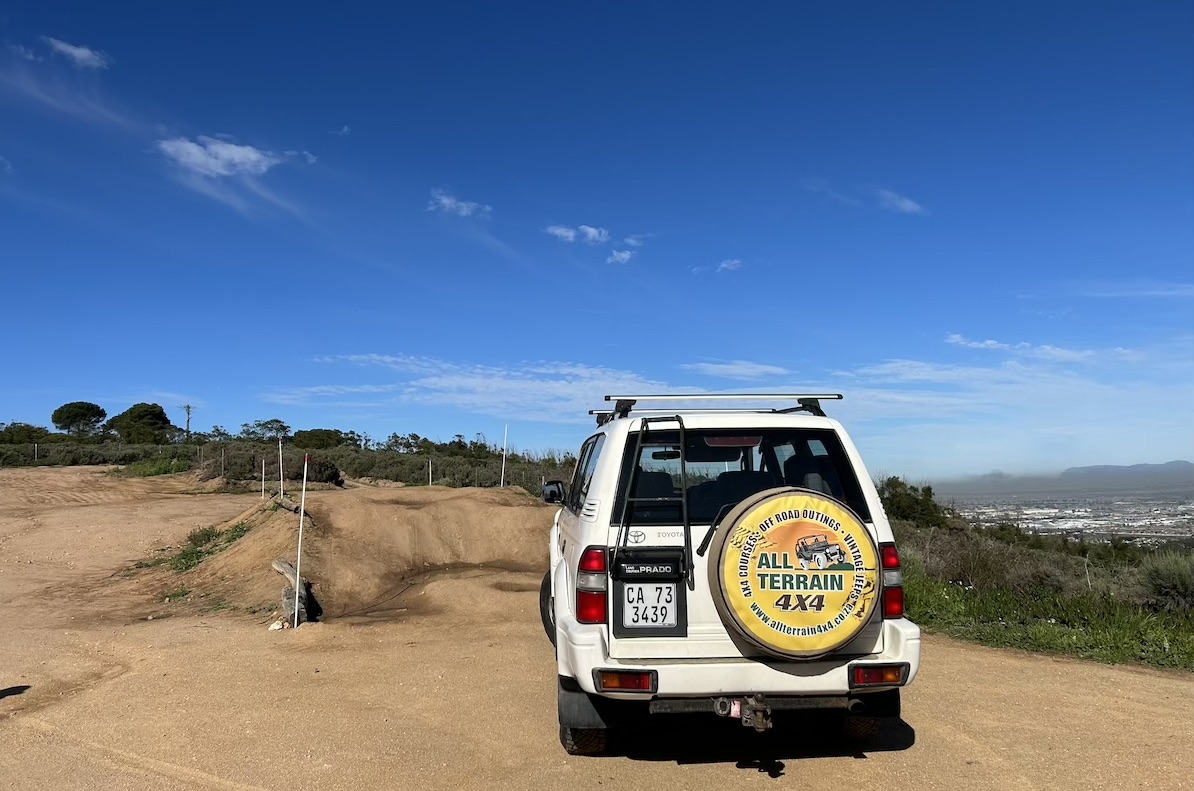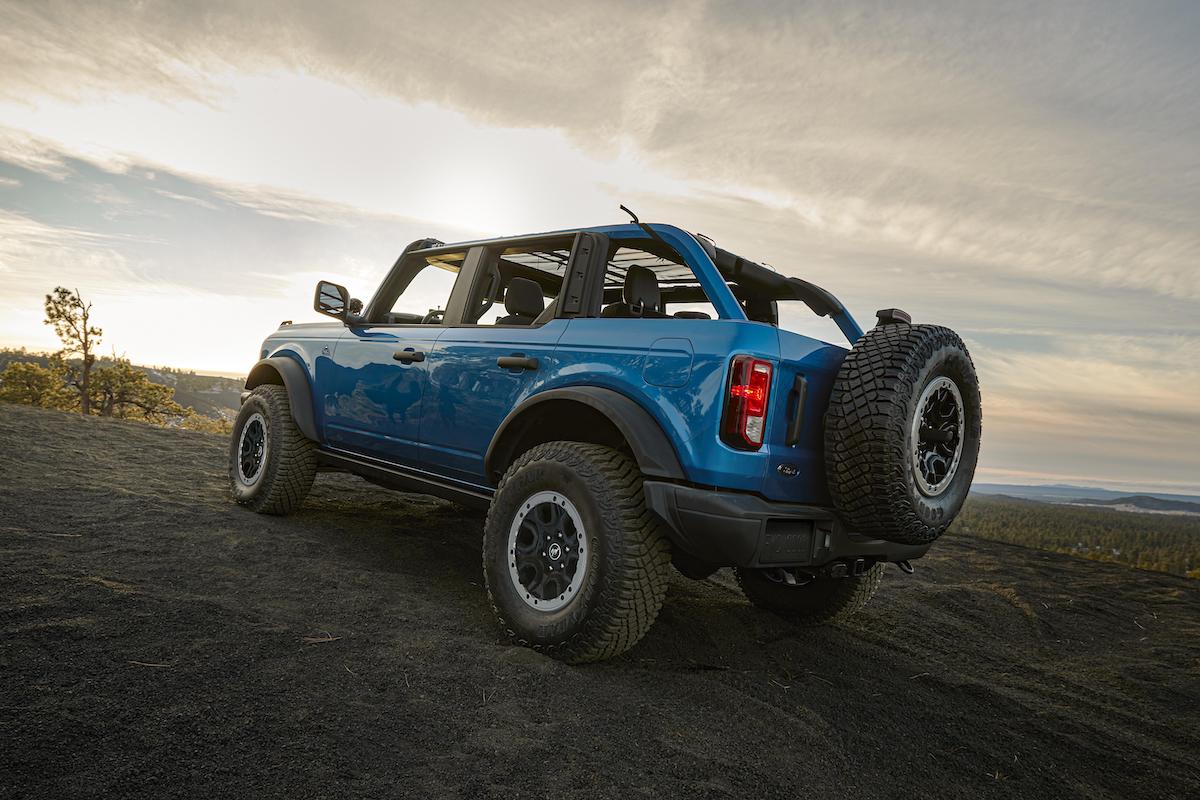The Volkswagen Amarok has been with us for ten years now and in all that time it could never shake the unfounded idea that it was somehow less capable off-road than certain Japanese bakkies.
This reputation took a turn for the worse when the automatic was launched a few years ago. It had full-time four-wheel drive and a rear differential lock, but no transfer case.
Many wrote it off as a gimmick and said it wasn’t possible to replicate low-range with a short first gear and a fancy “Off-Road” button. “It will never do what my *insert name of any other mainstream double cab here* can do…”
We weren’t entirely convinced either, but over the years we’ve seen Amaroks do some amazing things. The most epic example of this is probably the time we got lost somewhere in Lesotho on a road that eventually disappeared. We were filming a Nissan Patrol at the time and even that struggled on our overnight venture to cover no more than 30km.
Obstacles included a river crossing, massive rocks, steep inclines and dodgy gravel sections covered in snow in between. The Amarok took some shots, but it soldiered on behind the Patrol and successfully completed what has to rank as one of the top ten harshest off-road scenarios we’ve ever encountered.
We’re not the only fans of the Amarok automatic. Sarel van der Merwe also happens to be a supporter and he’s not afraid to call cynics out whenever they dare say that it’s not as “capable” as bakkies with the traditional transfer case setup. “Drive it and then we’ll talk,” said Sarel on the evening before we set out to compete in the media round of the 2019 Spirit of Amarok event.
Spirit of Amarok
The SOA is basically a competition. It’s the only amateur 4×4 championship with international status and it takes place on a course designed by Supervan himself.
He takes the design of the course so seriously that he never repeats himself. The event takes place in a different location every year just for that reason. Nobody knows what to expect, so nobody has an advantage.
The only slight advantage we had is that we had actually competed in this event before, so we knew what to expect – slow, technical challenges and faster rallying stages.
Both categories would be timed. In the technical stuff, you had to be on time, while the rally stages challenged you to get as close as possible to a benchmark time set by Sarel. To make matters even more difficult, every obstacle and course included those blasted white poles that you’re not allowed to hit. Every pole comes with a penalty, be it marks subtracted from the 100 points you get at the start of a technical stage, or seconds added to your time on the rally stages.
In the hour before the event started, we talked about some strategy. In our humble opinion, the driver doesn’t matter all that much when it comes to the technical stuff. The most important person is the navigator standing outside the car. The navigator has a much better view of the extremities of the car, so all the driver has to do is exactly what the person standing outside is showing him. That was our strategy and we stuck to it for a grand total of five minutes.
Sarel turned our strategy upside down when he told us that no navigators would be allowed outside the car. And we wouldn’t be allowed to walk the obstacle ahead of time. We’d be going in completely blind.
Luckily, we had something else going for us. We spent a fair amount of time in various Amarok models recently. That helps a lot when you need to judge where exactly you need to start turning to miss those dreaded white poles.
Having this knowledge at our disposal helped and keeping things slow and steady helped us score full marks on the first two stages and 90 on the third. Since we were only doing a shorter version of the full event, we swapped drivers.
At this point, the mind games started. Between obstacles people started chatting to each other, sharing scores and mishaps they encountered. The red mist descended and people who swore they were just there for fun started calculating how far ahead/behind they were and what they needed to do to get to first place.
The fourth obstacle proved to be a tricky bugger. It consisted of just one pole and the driver had to reverse uphill and the Amarok’s tow bar as close as possible to said pole. Sounded easy enough, but Sarel threw another spanner in the works. The Amarok’s fancy parking assistance and the reverse camera had been disabled.
Points were deducted according to how far off the mark the car was. We were 55mm off the mark, so we scored 45 points. With a badly bruised ego, we realised just how much we depend on parking sensors, cameras and such to do the hard work for us these days. After making a mental note to partake in more old-fashioned parking in the future, we completed the final obstacle, had some lunch and mentally prepared for the rally stages.
As for the Amarok, it performed beautifully. As you can see from the images, the technical challenge is no walk in the park. It’s tricky and more advanced than what the average double cab owner will likely ever encounter in his car. The Amarok makes it easy, however. You press the off-road button and it will hold on to first gear for as long as you need it. The V6 provides enough pulling power, even without low-range. When it comes to going down obstacles, the hill descent control works a charm. It doesn’t work according to a set speed, but rather based on brake input from the driver. If you feel the car is going too quickly, you simply put some pressure on the brake and slow it down. The Amarok will then keep itself at that speed, until you accelerate, or brake again. The rear diff lock is also useful for when all else fails.
“Don’t crash my cars.”
Those are the words Sarel left us with on the first night. In fact, he outright stated that he didn’t like the idea of us using V6 Amaroks instead of the more sedate Biturbo 2.0-litre models.
We’re inclined to agree, because of our previous experience on the Spirit of Africa, which is a separate event, but very much the same. Back in the day, we competed in the 2.0-litre model, in singe cab guise. Even so, it was a nerve-racking experience.
The power output of 120kW and 400Nm didn’t sound like much to our young, overly enthusiastic and equally competitive brains, but you need only get on the power too early out of the first corner to realise that it doesn’t take much to get a single cab Amarok extremely sideways. It’s a jol, for sure, but not necessarily the quickest time around a corner.
That first Spirit of Africa event also gave us the perfect example of the huge gap between our seemingly small bag of talent compared to the reservoir of talent Sarel has at his disposal.
On one particular stage, it all came together beautifully. We had grown accustomed to the engine, gearbox and handling intricacies and avoided every single pole on the way. This resulted in a time that was within a second or so of the time Sarel sent.
Fittingly proud, we marched proudly over to Sarel later in the day, wanting to know how hard he was pushing when he set the times. “Well,” said Sarel, in his typical straight forward fashion. “I wasn’t really pushing that hard, because I had to set a time you guys could get close to.”
On that stage and in our hands, the Amarok felt like it was on the ragged edge of its abilities. Like it had no more to give, but obviously it still had some in reserve. That’s the difference between us and racing drivers. We (accidentally) take the car to what we perceive to be the limit occasionally. Sarel operates above that line at all times.
Suffice to say that we were intimidated by the idea of driving a V6 Amarok on some rally stages. The slow speed stuff was tough, but at least there wasn’t any real chance of doing damage to the car. At a higher speed, without any supervision, the chances of putting a brand-new Amarok on its roof is actually very high. And nobody wants to be “that guy.” Especially not with a brand-new bakkie that had just over 50km on the clock…
Once again, we had some inside knowledge. Two months ago, we sat in the passenger seat while Hannes Grobler spanked an Amarok V6 on a gravel road. That gave us some idea of what the Volksie could do when pushed hard. Not that we were planning on going at it as hard, but we knew anything slower than that would be fine.
The difficult part was finding the perfect setup for the rally stages, with the big question being whether the traction and stability control should be left on. For safety reasons, we left it on for the first stage. Bad idea, as it turned out. The Amarok bogged down on the very first turn and it refused to unleash the mighty 165kW and 550Nm for a good three seconds. Stabbing away at the button to switch it all off, we tried to make up the time on the rest of the run, but to no avail.
We kept the nannies off for the rest of the day and let the automatic gearbox do the work. Keeping it in a straight line was actually much easier than anticipated. The full-time four-wheel-drive system does a superb job of keeping things in a straight line at a higher speed. The back steps out slightly out of slower corners thanks to the 40:60 torque split, but even the most ham-fisted person can catch it at less than 40km/h. The one thing you should be wary of is the over-boost function. Amarok owners know this function well. It’s meant to provide an extra dollop of power when overtaking or towing, but at lower speeds on a gravel road it can catch you out if you aren’t used to it. Luckily, we knew of its existence and were extremely cautious not to floor the Amarok when exiting a corner. Treat it with respect and it will treat you well, but drive it like a spanner and it will cause much clenching.
At the end of the day we chose the wrong strategy, out of fear of crashing the car. Instead of driving at ten-tenths and hoping not to hit the poles, we drove at around seven-tenths and made sure we didn’t hit them.
Our closest competitors had a better strategy, which was to just go as fast as possible and sacrifice a pole or two along the way. Even with the penalties, their collective time was faster than ours, which is a fair victory. The winning team drove magnificently throughout the day. Fast, yet careful, which resulted in more than 800 out of a possible 1000 points. It was a spectacle to behold and we definitely picked up some tips for when we attend next year.
The rest of us finished in a cluster within 100 points of each other. Cue excuses and some blaming of the marshals, but we were actually quite chuffed with our final score. We set out to not die and we definitely achieved that.
Seventh place, no red flags and a perfectly intact V6 Amarok were a bonus, we reckoned.
By the time you read this, the local rounds of the Spirit of Africa will be nearly finished. More than 400 teams will have gone through the initial rounds to select the semi-finalists. These 20 teams will then compete to find one local winner of the Spirit of Africa trophy and this team will go through to compete in the International Spirit of Amarok.
It’s an epic event and a definite must if you fancy yourself an expert off-roader/rally driver extraordinaire. We enjoy it because it’s a decent company, good food, loads of laughs and, more than anything else, extremely humbling.
Specifications
Volkswagen Amarok V6
Engine: V6 Turbodiesel
Displacement: 2 970cc
Power: 165kW @ 3 000r/min
Torque: 550Nm @ 1 400r/min
Transmission: Eight-speed automatic
Driven wheels: All-wheel drive
Driving aids: Electronic diff lock, ESC
with brake assistant and hill start/hill
descent assist, off-road function
Ground clearance: 210mm
Fuel tank capacity: 80 litres
Average consumption:10.8 litres/100km
Service plan: Five-year/90 000km
Mechanical Warranty: Three-year/100 000km
Service intervals: 15 000km
Price: R783 200
